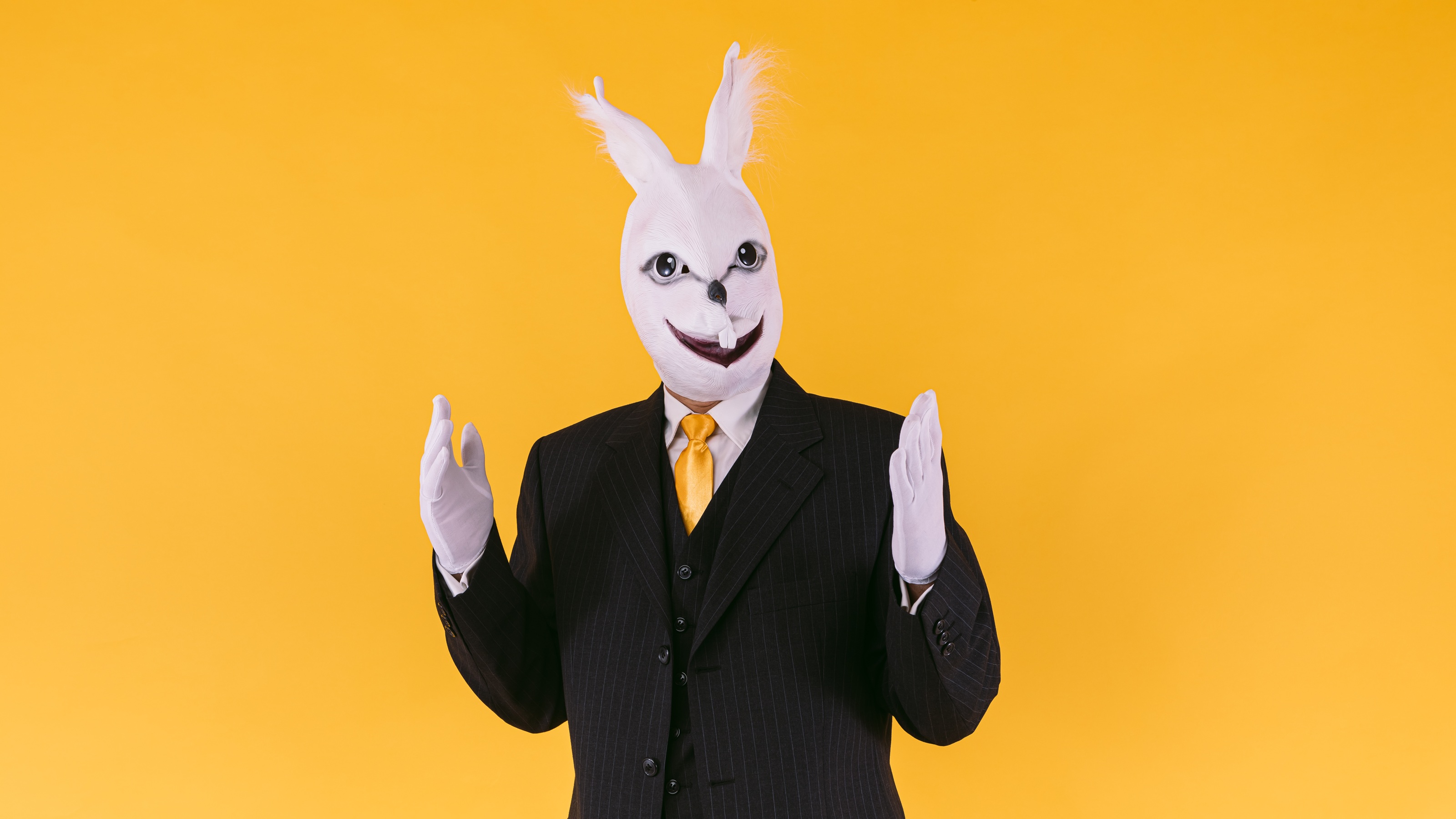The Best Consumer Staples Stocks To Buy
In an uncertain market, the best consumer staples stocks provide consistency and stability to portfolios.


There's no such thing as a "sure thing" in the stock market. But when investors need to protect their portfolios against the winds of uncertainty, they frequently flock to the relative safety of consumer staples stocks.
Small wonder.
The consumer staples sector is made up of companies that produce or sell the basic goods that people need day in and day out.
From just $107.88 $24.99 for Kiplinger Personal Finance
Be a smarter, better informed investor.

Sign up for Kiplinger’s Free Newsletters
Profit and prosper with the best of expert advice on investing, taxes, retirement, personal finance and more - straight to your e-mail.
Profit and prosper with the best of expert advice - straight to your e-mail.
During times of economic difficulty — including slowdowns and recessions — people might rein in their spending across any number of categories.
But they still need to eat and keep clean — providing a steadier baseline of demand for consumer staples stocks than many other industries enjoy.
Today, we'll take a closer gander at the sector: How it's defined, why investors seek exposure to it, and how to find the best consumer staples stocks to buy.
What are consumer staples stocks?
The short answer: Consumer staples stocks are companies whose primary businesses involve producing or selling basic goods, such as groceries and personal-care items.
For a more complete answer, let's look to the Global Industry Classification Standard — a framework used by major index providers to help classify public companies.
According to the GICS, the Consumer Staples sector comprises companies primarily engaged in food and staples retail and distribution, such as owners and operators of hypermarkets, super centers and pharmacies.
It also includes companies that produce food, beverage and tobacco products and manufacture household and personal products, such as detergents, soaps, diapers, cosmetics and perfumes.
Why do investors buy consumer staples stocks?
Consumer staples stocks are similar to the health care and utility stocks in that they deal in the business of necessities — items people ultimately must pay for, rain or shine.
As a result, consumer staples are considered to be defensive stocks.
They generate relatively stable revenues, they're not as economically sensitive, and they can produce oodles of free cash — cash that is frequently handed back to shareholders in the form of high dividend yields.
The defensive underlying businesses and those cash payouts are a powerful one-two punch that can provide vital ballast to portfolios during periods of high volatility.
Naturally, there's no guarantee that staples will always hold up their end of the bargain — consumer staples have historically underperformed during a handful of downturns — but they've frequently proven their worth during bear markets.
On a total-return basis (price change plus dividends), consumer staples outperformed the S&P 500 during the Great Recession (-29% to -55%), 2020 COVID crash (-24% to -34%), 2022 bear market (-9% to -21%).
Those were just sector averages; some individual names performed even better.
This protection comes at a price, however — specifically, lesser upside potential during "risk-on" periods for the market.
While consumer staples enjoy high baseline demand, there's not much growth potential during periods of economic expansion.
You're probably not going to buy double the number of diapers or twice as much soap as you need just because things are going well.
That money is likely going toward other expenditures (on the things consumer discretionary stocks provide).
How to find the best consumer staples stocks to buy
We can't tell you exactly what you'd want out of a consumer staples stock — you might prefer larger companies to smaller firms, or you might be insistent on only buying at deeply discounted valuations.
But we can help you start your search with a basic quality screen.
To get to the following list of the best stocks to buy in the consumer staples sector, we looked at those.
Within the S&P Composite 1500: This index is a combination of the S&P 500, S&P MidCap 400, and S&P SmallCap 600.
This screen allows for stocks of different sizes, but it still represents roughly 90% of America's market capitalization, weeding out the smallest stocks.
With a long-term estimated earnings-per-share growth rate of at least 5%: Consumer staples stocks aren't exactly "growthy" stocks, per se, but we still want to buy companies that are able to improve their profits over time.
Remember: Expectations don't guarantee results.
With at least five covering analysts: We'd like to look at stocks that are on Wall Street analysts' radar, which makes it likelier that there's both more reporting and more insights on these companies.
The more research we have at our disposal, the more educated a decision we can make.
With a consensus Buy rating: All the stocks must have an average broker recommendation of 2.5 or less within S&P Global Market Intelligence's ratings scale.
S&P Global Market Intelligence converts analysts' ratings into a numerical scale. Anything with a score of 2.5 or less is considered a Buy.
With a dividend yield of at least 1.5%: Dividends are often an important consideration for investors buying consumer staples stocks.
Here, we want to make sure that these stocks produce, at the very least, a little more income than the S&P 500 (current yield: 1.3%).
Company (ticker) | Long-term EPS growth rate | Analysts' consensus recommendation | Dividend yield |
Dollar General (DG) | 6.5% | 2.39 | 2.1% |
Tyson Foods (TSN) | 19.6 | 2.29 | 3.5 |
Kroger (KR) | 6.1 | 2.16 | 1.8 |
Sysco (SYY) | 6.1 | 2.10 | 2.6 |
Keurig Dr Pepper (KDP) | 7.2 | 1.91 | 2.7 |
Philip Morris International (PM) | 11.4 | 1.88 | 3.0 |
Coca-Cola (KO) | 6.1 | 1.62 | 2.9 |
Related content
Profit and prosper with the best of Kiplinger's advice on investing, taxes, retirement, personal finance and much more. Delivered daily. Enter your email in the box and click Sign Me Up.
Kyle Woodley is the Editor-in-Chief of WealthUp, a site dedicated to improving the personal finances and financial literacy of people of all ages. He also writes the weekly The Weekend Tea newsletter, which covers both news and analysis about spending, saving, investing, the economy and more.
Kyle was previously the Senior Investing Editor for Kiplinger.com, and the Managing Editor for InvestorPlace.com before that. His work has appeared in several outlets, including Yahoo! Finance, MSN Money, Barchart, The Globe & Mail and the Nasdaq. He also has appeared as a guest on Fox Business Network and Money Radio, among other shows and podcasts, and he has been quoted in several outlets, including MarketWatch, Vice and Univision. He is a proud graduate of The Ohio State University, where he earned a BA in journalism.
You can check out his thoughts on the markets (and more) at @KyleWoodley.
-
 Four Spa Retreats for Well-Heeled Retirees
Four Spa Retreats for Well-Heeled RetireesWe hand-picked these U.S. spa retreats for their serenity, amenities and dedication to the comfort of older travelers. All are located in the Continental U.S.
-
 Four Military Benefits That Have Helped My Family
Four Military Benefits That Have Helped My FamilyMilitary life can be challenging for servicemembers and their families, but they're offered some significant financial benefits to help cushion the blow.
-
 Why More Americans Are Redefining Retirement, Just Like I Did
Why More Americans Are Redefining Retirement, Just Like I DidRetirement readiness requires more than just money. You have a lot of decisions to make about what kind of life you want to live and how to make it happen.
-
 3 Major Changes Investors Must Prepare for in 2026
3 Major Changes Investors Must Prepare for in 2026A possible stock market bubble. Trump accounts. Tokenized stocks. These are just three developments investors need to be aware of in the coming months.
-
 A Compelling Case for Why Property Investing Reigns Supreme, From a Real Estate Investing Pro
A Compelling Case for Why Property Investing Reigns Supreme, From a Real Estate Investing ProInvestment data show real estate's superior risk-adjusted returns and unprecedented tax advantages through strategies like 1031 exchanges and opportunity zones.
-
 Stocks Close Out Strong Month With Solid Amazon Earnings: Stock Market Today
Stocks Close Out Strong Month With Solid Amazon Earnings: Stock Market TodayAmazon lifted its spending forecast as its artificial intelligence (AI) initiatives create "a massive opportunity."
-
 Are You Retired? Here's How to Drop the Guilt and Spend Your Nest Egg
Are You Retired? Here's How to Drop the Guilt and Spend Your Nest EggTransitioning from a lifetime of diligent saving to enjoying your wealth in retirement tends to be riddled with guilt, but it doesn't have to be that way.
-
 Government Shutdown Freezes National Flood Insurance Program: What Homeowners and Buyers Need to Know
Government Shutdown Freezes National Flood Insurance Program: What Homeowners and Buyers Need to KnowFEMA's National Flood Insurance Program is unavailable for new customers, increased coverage or renewals during the government shutdown.
-
 Separating the Pros From the Pretenders: This Is How to Tell if You Have a Great Adviser
Separating the Pros From the Pretenders: This Is How to Tell if You Have a Great AdviserDo you leave meetings with your financial adviser feeling as though you've been bulldozed into decisions or you're unsure of what you're paying for?
-
 What Netflix Stock's 10-for-1 Split Means for Investors
What Netflix Stock's 10-for-1 Split Means for InvestorsNetflix announced its long-awaited stock split after Thursday's close. NFLX will start trading on a split-adjusted basis ahead of the November 17 open.
